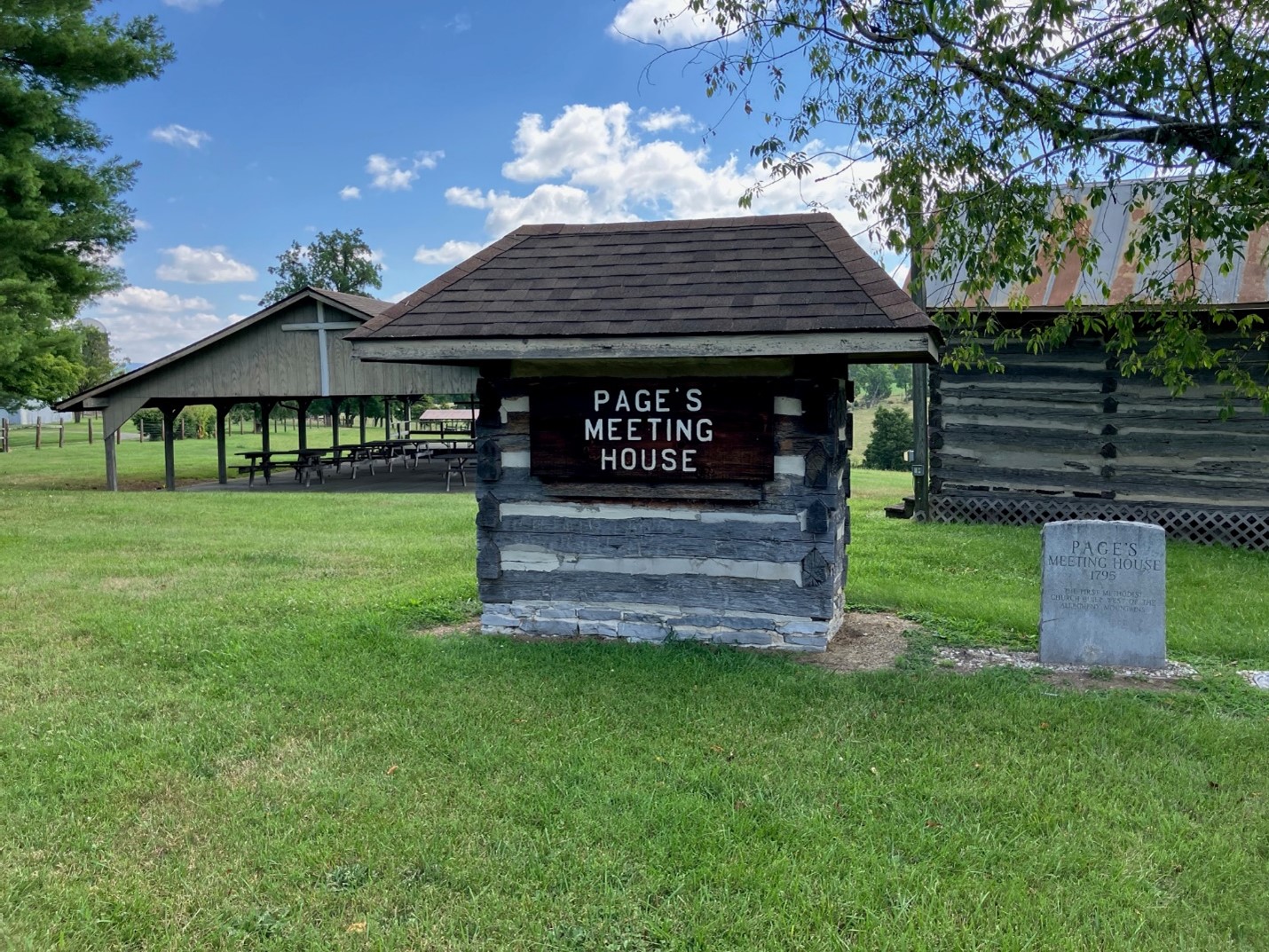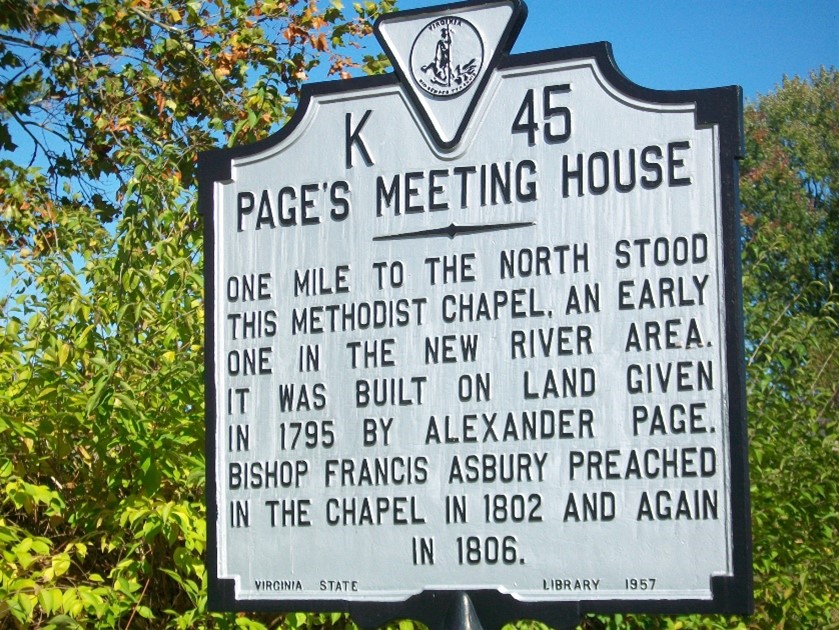Photos courtesy of Joe Hester


A young man named Edward Morgan came to the New River Valley in the late 1760s. He had arrived at the port of Baltimore after having sailed from England. By prior arrangement, he had to work for a local farmer for two years to pay for his passage. After gaining his freedom he decided to head west to gain some land and start a new life on what was then the American frontier. He was unmarried and had yet to see his twentieth birthday. He was a believer in Jesus Christ, whose life he held in the deepest love and respect and whose spiritual torch he carried.
This was years before Bunker Hill and Concord, those epic battles which began the American Revolution. The Stamp Act was still fresh in the minds of Americans whose discontent with King George was growing steadily and freedom was gaining momentum.
Edward’s westward travels carried him first to Holston area in far southwest Virginia but that move was temporary for he arrived back in the New River Valley prior to 1773 settling west of the New River.
The New River had for a time acted as a barrier to westward migration but ferries on the New at both Ingles Ferry on the Wilderness Road and at Peppers Ferry, farther up the river, were helping settlers to cross the river and find open land on the West bank and beyond in what was later to become Pulaski and Giles counties.
After making a home in the New River Valley, Edward met a man named Alexander Page, a farmer who owned land on the West Bank of the New River in what we now call the Fairlawn/Bell Spring area. He was a brother in Christ and began to hold Bible study and worship in his house inviting his neighbors to join in. Edward Morgan joined in later and became a leader among the people who came to worship at what was now called Page’s Meeting House. Attendance grew and Edward and Alex realized they would soon need a separate house of worship to accommodate their growing congregation, so plans were made to build a chapel on Alex’s land. The original chapel was completed around 1775. Alexander Page’s formally deeded the land on which the church was built to the Methodist Church in 1795.
Along about this time, as more setters arrived in the NRV and the congregation grew at Page’s Meeting House, Edward Morgan saw that the area was in bad need of a pastor. Other than the Dublin Presbyterians there no other churches in the area, so he made plans to travel to Baltimore in the Colony of Maryland to ask that a preacher be assigned to this area. Riding horseback for over 300 miles, he rode to Baltimore and found Francis Asbury, newly appointed Bishop of the Methodist movement in America. Asbury was greatly impressed with the faith of Edward Morgan but there was a shortage of pastors and there was no one to assign to the frontier In Virginia. So he told Edward to go back and “Do the job yourself”. Asbury was a follower of John Wesley, founder of Methodism who advocated the use of Lay pastors where needed.
So, Edward rode back to the NRV and began to pastor at Page’s Meeting House, as the first preacher in the first church, in what was to become the Holston Conference. As the area continued to grow, Edward Morgan became the people’s pastor in every hamlet that sprouted up on both banks of the New River. He was a circuit rider before Circuit Riders became popular and was a beloved figure among families all over the NRV valley. He loved Jesus and was proud to spread the Good News of the Gospel of Jesus Christ rejoicing with each new convert who came to know Jesus, who had brought the full measure of God’s love into the world.
Bishop Asbury later became co-leader of the Methodist Episcopal Church in America which had separated from the Anglican Church of England after gaining independence in the Revolutionary War. He was a circuit rider of sorts himself riding over 270,000 miles across America visiting and encouraging churches. He visited and spoke at Page’s Meeting House in 1802 and again in 1806.
During another visit in 1801 to Peppers Ferry Chapel across the river, he ordained Edward Morgan as a Deacon. Edward Morgan continued to preach God’s word long into his old age and far into the 1800s. He passed into his heavenly home in his 93rd year in 1851 and is buried on site at Page’s along with other pioneer members. Page’s Meeting House continued on for over a hundred years. Ole time camp meetings were popular in the 1800s and were held on site. In 1875 when time had taken its toll on the old meeting house, a new church was built to replace it and named Morgan’s Chapel Methodist Church in honor of the Rev. Edward Morgan. It is located about one and a half miles south of the original site. It still serves the Lord’s calling today.
Page’s Meeting House Site Notes:
At some point the original PMH building was abandoned after Morgan’s Chapel was built. In the 1960s a movement began to restore the site which had reverted to forest and farmland. Vernon McCoy and Kirby Phillips lead the way. By the early 1980s a joint effort by area churches of multiple denominations culminated with the clearing of the land, the laying of the concrete slab, the erection of the shelter, and the restoration of the cemetery. The first camp meeting in the restored site was held in 1984 in a tent with the shelter being added in 1986. Special thanks go out to the members of the Church of God, Church of God of Prophesy, and Snowville Christian Church as well as the local Methodist congregations.
The log buildings on site are built with recovered original PMH logs and from logs from Morgan’s home place in Pulaski County.
The pine trees lining the site were planted in March 1985 and the fences were added at the same time.
Our grateful love and appreciation go out to the many congregations and their volunteers in the NRV who helped restore Page’s and have kept it going for all these many years. May it continue on as a historical place where all people of the NRV will come to experience the Gospel of Jesus Christ on these hallowed grounds of our spiritual ancestors.
In the Great Commission Jesus gave us all the responsibility to spread the Gospel to all nations. That also means to all neighborhoods! Alexander Page and Edward Morgan answered the call of their commission and took the action necessary to build the churches needed to serve the Kingdom in the NRV. Their actions served God’s kingdom in the 18th and early 19th centuries. The church leaders who came after them built more churches as communities grew and the people of the late 19th and 20th centuries heard the story of Jesus. The spiritual legacy as well as the physical legacy of Alex and Edward lived on.
Today there are 53 churches in and around the Radford and Fairlawn area. The number is far greater when you include the entire NRV……but half the pews are empty. Some churches are growing, but in most, there are more empty pews than full. Statistics show that in present day America only 30 % of the population attend church regularly. Church attendance has been declining for the past 50 years.
Come out and help us celebrate our heritage at the historic Page’s Meeting House on Hickman Cemetery Road just north of Rt. 11 in Fairlawn on Sept. 28. Activities begin with a hot dog meal beginning at 4 p.m., followed by a performance of the Randolph Ave./First UMC Youth Drum Corps. Singing by the God’s Voices Community Choir with other soloists and groups follows at 5 p.m. At 5:50 p.m. Joe Hester will present a short talk on the history of Page’s Meeting house. Our worship service will begin at 6 p.m., led by Evangelist Tucker LaForce, Pastor at Diamond Hill Baptist Church, Moneta, Va.
Come one come all to this special community worship service on the hallowed grounds. All are welcome!
Joe Hester of Radford

